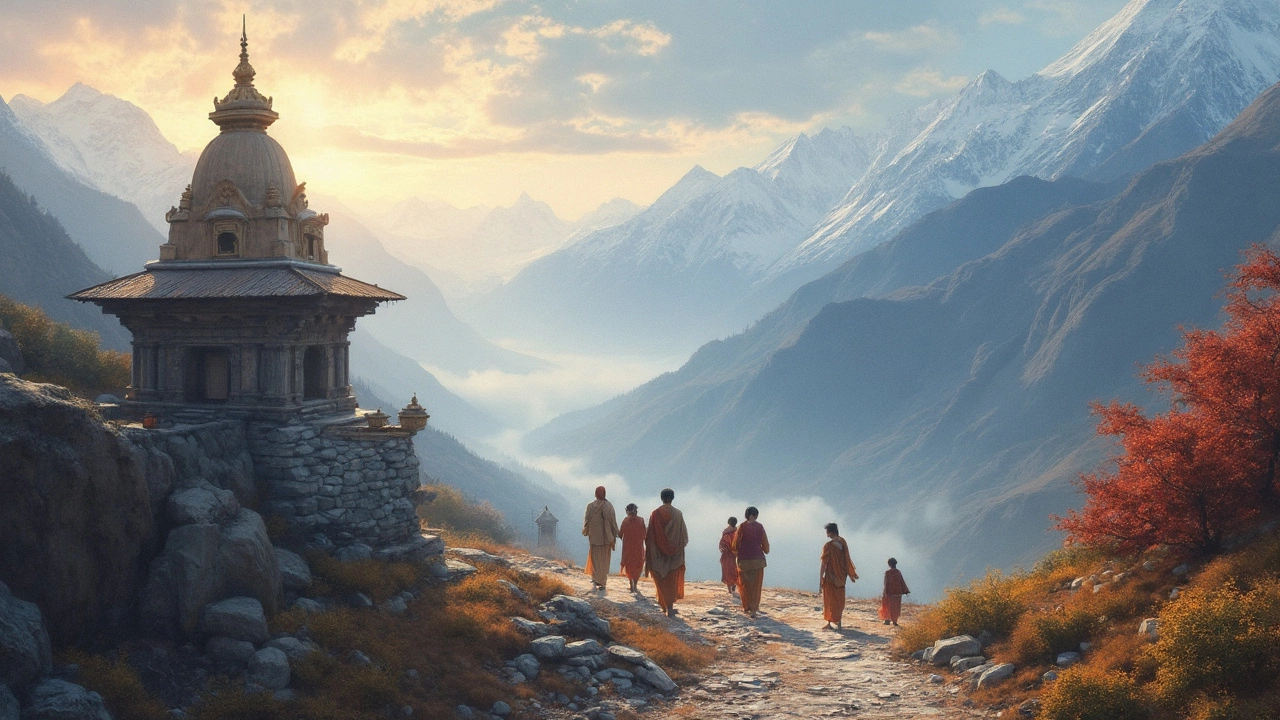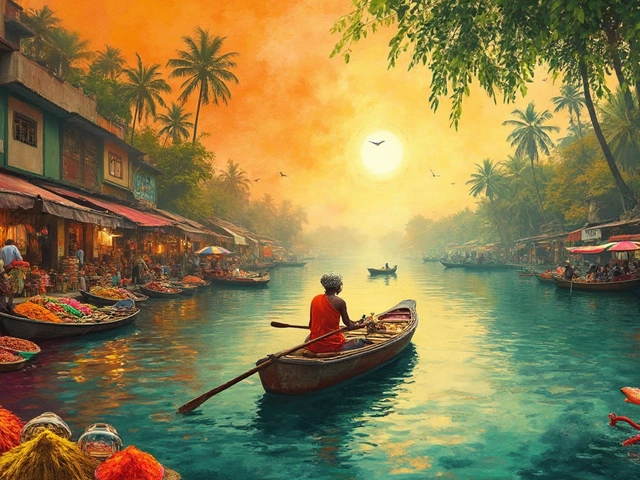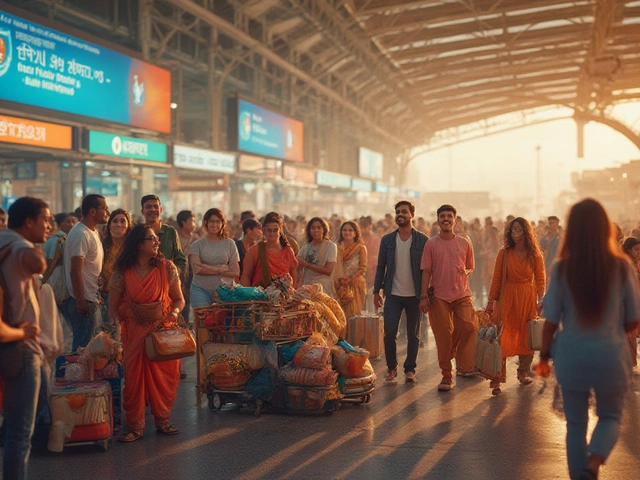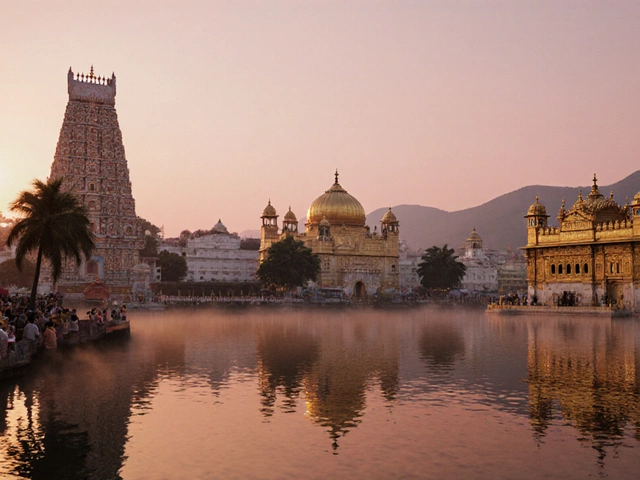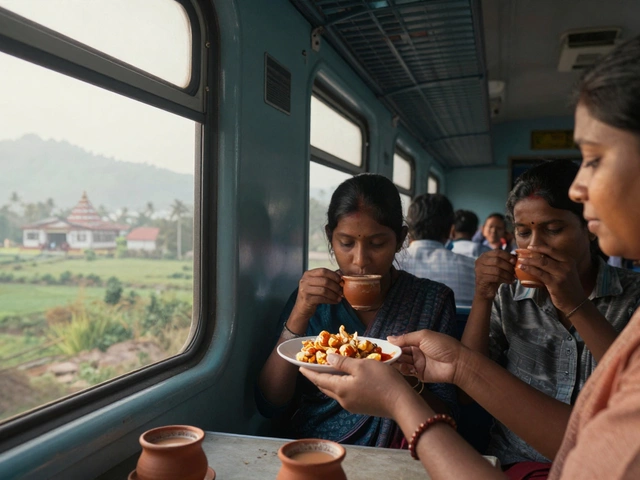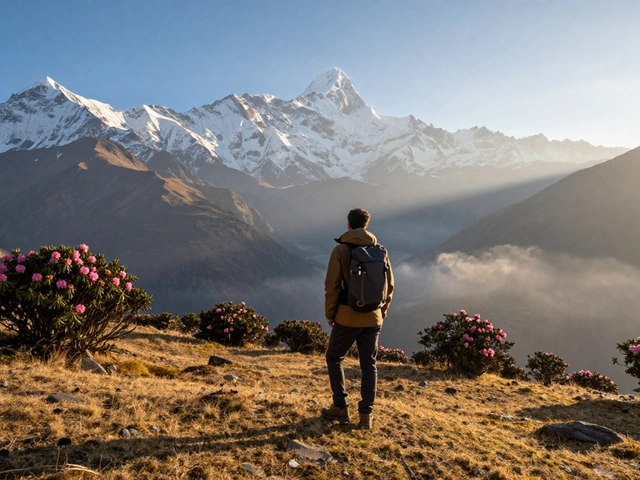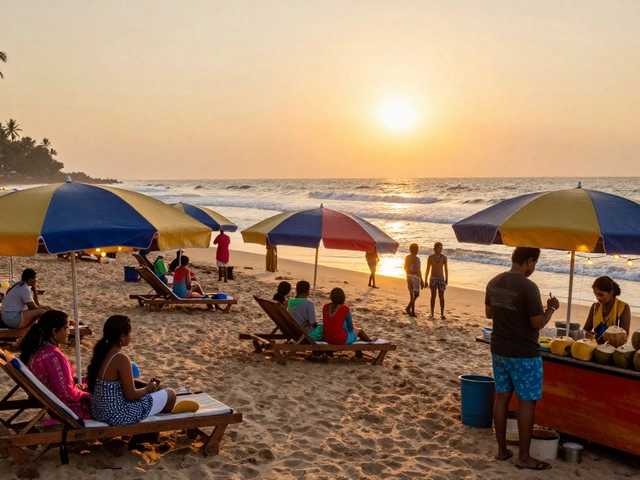Choosing the right time for your Char Dham Yatra is like picking the perfect time to visit a crazy but wonderful theme park. Some folks love the buzz of people, while others crave peace and quiet. I mean, imagine getting up close with the divine while either surrounded by crowds or relishing the tranquility. The timing can change everything!
Let's start with the peak months. May to June are the rockstars here. Think of sunny days, clear skies, and buzzing human activity at every temple stop. But brace yourself for long lines and hiked prices. It's like visiting Disneyland in summer break; thrilling but packed.
- Peak Season: When Everyone's There
- Avoiding the Monsoon Wrath
- The Calmer Off-Peak Experience
- Weather Woes and Wonders
Peak Season: When Everyone's There
Alright, if you're planning your Char Dham Yatra during the peak season, get ready for both excitement and a few challenges. From May to June, these sites are buzzing. It's like a grand party in the Himalayas, but with a touch of spirituality!
So, why these months? Well, for starters, the weather is pretty friendly. Imagine those crisp and bright days, perfect for capturing those picture-postcard shots. Plus, roads are generally in good shape, and safety isn't much of a worry, which is something you can't always say for the monsoons (more on that later).
Here's the flip side: everyone's thinking the same thing! It's popular among tourists, and locals know this too, which means crowds. And with crowds come long wait times, especially for darshan (that's when you get to see the deities up close). And let's not forget hotel prices. They know you're coming and adjust prices accordingly.
However, there's something magical about joining thousands of other pilgrims with the same spiritual goals. It's like being part of a massive communal vibe that can elevate the entire experience.
If you're up for the challenge, here's a quick list to help you gear up:
- Book early: Your travel and stays need to be booked well in advance. Think months, not weeks.
- Pack smart: The weather might be nice, but it’s still the Himalayas. Layered clothing is key.
- Plan for extra time: With so many like-minded visitors, things can take longer than expected. Patience is your best friend!
Remember, peak season has its thrills, but it's a trade-off between experiencing the lively energy of others and dealing with a bit more hustle and bustling around. If you're all about that social buzz, this might just be your time.
Avoiding the Monsoon Wrath
If you've ever had plans foiled by relentless rain, you know the monsoon can be a bit of a mood-killer, especially for trips like the Char Dham Yatra. From late June to early September, monsoon sweeps across India with heavy rains and muddy pathways. This is one of the reasons you might want to sidestep this period for your sacred journey.
The thing is, the regions surrounding the Char Dham sites, like Uttarakhand, get battered by rainfall during this time. Landslides aren't rare occurrences here; they're practically expected. Plus, those narrow mountain roads can become treacherous when slick with rain or blocked by debris. It’s not just about discomfort—safety is a genuine concern.
During monsoon, even if you huddle under a secure raincoat, your plans could still get a surprise washout with temple closures due to blocked routes. Plus, there's the constant dance of trying to keep your stuff dry. Imagine trying to feel spiritual drenched to the bone! Not the vibe you'd want on a temple tour, right?
So, what's the best takeaway? Just steer clear of the monsoon for a smoother, hassle-free temple tours India experience. Aim for those months when the skies are clear, the paths are open, and you can soak up the peace, not the puddles.
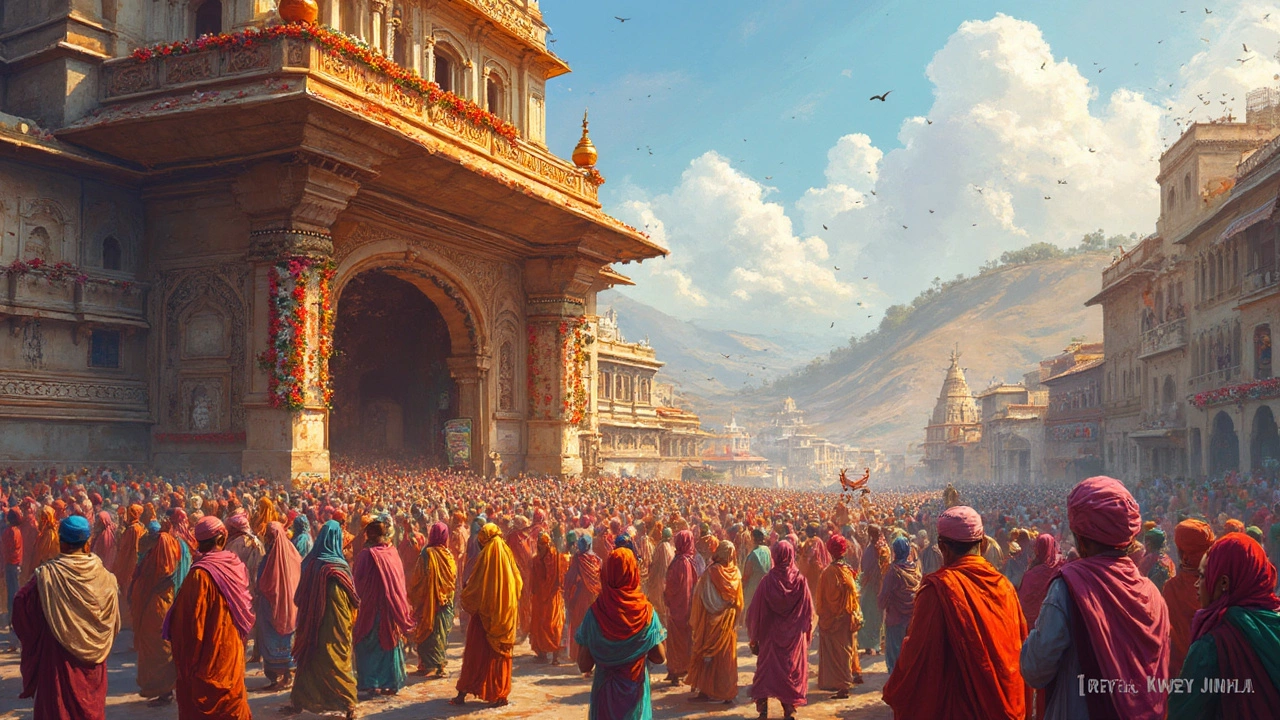
The Calmer Off-Peak Experience
Alright, so you're not into the hustle and bustle but still yearn for the spiritual vibe of the Char Dham Yatra. September to October can be your sweet spot. Picture those golden autumn days, a gentle chill in the air, and the beautiful landscape free from the flood of crowds. Sounds perfect, right?
During these months, you will get a quieter experience and more room to breathe in those divine vibes. Sure, it might be colder as you head deeper into October, so you'll need to pack some warm clothes. Trust me, the snug layers are totally worth the serene experience!
Moreover, accommodations are often cheaper and a bit easier to snag during these calmer months. You're less likely to find yourself in a hotel duel, wrestling someone else for that last room. This also means that local guides and service providers are less rushed and more attentive, turning your trip into a more personal adventure.
But don’t just take my word for it. Let's break down some basics to keep in mind when planning during this time:
- Weather: As the rains taper off, the trails are less slippery but keep a check on the forecasts for unexpected showers.
- Accessibility: Roads are usually clearer post-monsoon, making those tricky mountain paths less of a headache.
- Local Culture: Fewer tourists mean more chance to engage with the locals, who might just share some amazing tales and temple histories with you.
So, if peace and a bit of chill in the air sound like your kind of mystical journey, then these months can offer an unforgettable temple tours India experience. Just remember, the key is preparation. A little planning and packing wisely can make this less-traveled road the highlight of your spiritual journey!
Weather Woes and Wonders
Weather is kind of a big deal when planning your Char Dham Yatra. It’s like your mood ring—tells you a lot about what’s coming. Let’s break it down so you’re not like, "Why didn't anyone warn me?"
First up, you've got the summer months, mainly from May to June, which are pretty pleasant. The sun warms up the valleys and makes for great trekking against the backdrop of stunning Himalayan views. But don’t think it’s all smooth sailing—summer evenings can get chilly, so pack smart. Layers are your best friends.
Come July, rains start showing up uninvited, and boy, do they make their presence felt! The monsoon season, which stretches till August, is when those landslides play spoilsport. Roads can get blocked, and travel becomes a hassle. It’s not the safest or easiest time to visit, trust me.
Once monsoon bids adieu, September and October step in. Ah, the sweet spot for a lot of travelers. The weather’s all friendly again. Clear skies, lush landscapes, and fewer crowds make for a peaceful pilgrimage. Perfect for soaking in the spiritual vibe without getting lost in tourist waves.
Winter, though, is a strict no-go. From November to April, heavy snowfall shuts down the holy sites. Roads are inaccessible, and the temples close their doors for months. Not the ideal setup if you’re planning a spiritual journey.
Here’s a quick rundown to keep notes:
- Best months to go are May to June, and September to October.
- Avoid traveling from July to August due to monsoon-induced landslides.
- Steer clear from November to April as winter closes down the routes and temples.
So, keep an eye on that weather app and plan accordingly. That way, you can focus on the experience, not the logistics gone wild.
